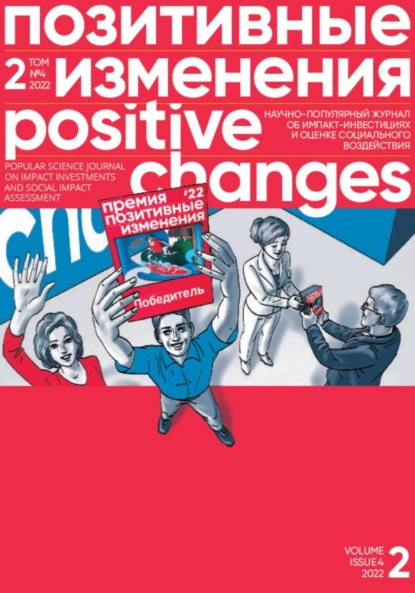По всем вопросам обращайтесь на: info@litportal.ru
(©) 2003-2024.
✖
Позитивные изменения. Том 2, №4 (2022). Positive changes. Volume 2, Issue 4 (2022)
Настройки чтения
Размер шрифта
Высота строк
Поля
Green Human Resource Management. Assessing the Impact on the Environmental Sustainability of Banks (Nigeria Case Study)
As the ESG agenda is gaining popularity around the world, companies start paying more and more attention to environmental responsibility, striving to reduce ecological damage. Green human resource management practices are becoming part of corporate strategies. For example, this means electronic workflow, from online vacancy announcements to employee training to use the resources sparingly and to conserve energy. In this article, we discuss the effects of “green” HR on the environmental sustainability of banks in Katsina State, Nigeria.
Holo Matthew Aker
Department of Business Management, Federal University Dutsin-ma, Katsina State, Nigeria
Abubakar Sadiq Suleiman
PhD, Associate Professor, Department of Business Management, Federal University Dutsin-ma, Katsina State, Nigeria
INTRODUCTION
The global concern for environmental sustainability is on the increase. This is a result of the growing threats of climate change and global warming, as well as other environmental challenges, which are compelling individuals, organizations and governments to be more responsive to the environment. These environmental concerns have posed multifaceted managerial challenges to present-day management of organizations and have fundamentally affected operations, strategies, policies and culture of business organizations globally (Cohen et al., 2014). This phenomenon has necessitated the need to integrate environmental management practices and human resource management practices in organizations (Ali & Wael, 2018; Briggs, 2017; Renwick, et al., 2012).
Human resource management plays a crucial function in managing and coordinating the policies, activities and resources of an organization (Renwick et al., 2012) and is pivotal to achieving environmental sustainability (Ramasamy et al., 2017). Hence the growing research interest in Green Human Resource Management (GHRM) that denotes the integration of human resource management practices and environmental management practices to encourage employees' commitment to environmental protection (Gharibeh, 2019).
Though GHRM is a relatively new concept in human resource management that is still underdeveloped in Nigeria (Adesola et al. 2021; Diri & Otekenari, 2021), the global threat of climate change and other environmental challenges affecting Nigeria have made it a necessity in the business circles and beyond, specifically in Katsina State, which is a state in Nigeria confronted with environmental issues like drought, desert encroachment, deforestation, land degradation, erosion and pollutions caused by climate change (Abaje, et al., 2017; Ibrahim, 2018), and other harmful environmental threats that need to be curbed.
Liu (2010) asserts that harmful environmental challenges are caused largely by activities of business organizations which have contributed significantly to carbon footprint. This assertion is true of Katsina State that has manufacturing and service-based organizations, including deposit money banks (DMBs), whose activities may cause environmental concerns. For example, Edeh and Okwurume (2019) alluded that most Nigerian banks have failed to fully integrate sustainable elements like environmental sustainability into their employees' daily work routine. This is despite the fact that they have adopted the Nigerian Sustainable Banking Principles (NSBP) (Committee of Nigerian Sustainabilty Banking Principles, 2018; Deloitte, West Africa, 2017). This is particularly evident in DMB branches in Katsina State, which still engage in activities that cause high carbon footprint, such as use of fossil fuel for their generating sets and vehicles, use of paper printouts in their transactions, poor waste management and recycling culture, lack of green space in their offices and premises, and lack of carpooling practices, among other harmful environmental practices. This necessitates the evaluation of the human resource management practices and activities of organizations operating in Katsina State against the environment in which they operate. Since DMBs are the most visible corporate organizations that can be found in almost all parts of Katsina State, this study focused on evaluating the effect of GHRM practices on environmental sustainability of deposit money banks (DMBs) in Katsina State. The study covers a one-year period of 2021.
Specific objectives of the study include:
1. Evaluating the effect of green job design and analysis on environmental sustainability of DMBs in Katsina State.
2. Examining the effect of green recruitment and selection practice on environmental sustainability of DMBs in Katsina State.
3. Ascertaining the effect of green training and development practice on environmental sustainability of DMBs in Katsina State.
In follow-up to the stated objectives, the study formulated the following null hypotheses to be tested in order to provide evidence for drawing conclusions:
H0
: Green job design and analysis has no significant influence on environmental sustainability.
H0
: Green recruitment and development practices have no significant influence on environmental sustainability.
H0
: Green training and development practices have no significant influence on environmental sustainability.
LITERATURE REVIEW
This section explains conceptual and theoretical frameworks, concepts of GHRM, environmental sustainability, green job design and analysis, green recruitment and selection and green training and development. It also reviews earlier empirical studies on GHRM practice and environmental sustainability.
The conceptual framework shows how GHRM practices sub-constructs of green job design and analysis practice, green recruitment and selection practice and green training and development practice relate to and influence environmental sustainability.
The study adopted stakeholder theory for better understanding and appreciation of GHRM practices and environmental sustainability. The stakeholder approach, as proposed by Edward Freeman in 1984, postulates that organization stakeholders are comprised of all groups or individuals that affect or are affected by the company's actions, decisions, policies, practices, goals or general operations, (Bhasin, 2020; Freeman, 1984 as cited in Guerci, et al., 2015). The theory stressed that management is responsible for creating and maximizing value for all stakeholders without compromising interest of any (About Stakeholder Theory, 2018). Guerci et al. (2015) observed that most management influenced by the stakeholder theory have implemented environmental management system in their firms. They further revealed that customers and regulatory pressures are significantly and positively related to environmental performance; hence stakeholders exert varying degrees of pressure on the organization to cater for their interests. And with environmental sustainability spawning increased concerns amongst business stakeholders such as employees, customers, communities, governments, activists and scholars (Jackson et al., 2011), coupled with ethical considerations for businesses, institutions and establishments to be socially responsible for the environment in which they live and operate, stakeholder theory become appropriate theory to explain GHRM and environmental sustainability.
GREEN HUMAN RESOURCE MANAGEMENT
The concept of green human resource management (GHRM) is perceived to have been introduced to HRM practice as recently as in the 1990s (Renwick et al., 2008), and it is given multiple definitions by different scholars. According to Opatha (2014, p. 15), GHRM refers to “the policies, practices and systems that make employees of an organization green for the benefit of the individual, society, natural environment, and the business.” Making the employees green here entails workforce that is aware of environmental sustainability practice and takes initiatives and actions that benefit nature, themselves, the community and environment where they operate. Jabbour (2013, p. 149) viewed GHRM as the “systematic, planned alignment of typical human resource management practices with the organizational environmental goals.”
Mandip (2012) states that GHRM is about getting all employees to initiate and engage in environmentally friendly practices and enhancing employees' awareness and commitment to environmental sustainability issues. He further stresses that human resources should serve as an impetus for environmental sustainability within organizations as it will align policies and practices with sustainability goals.
GREEN JOB DESIGN AND ANALYSIS (GJD)
Green job design refers to the organization of job tasks, duties and responsibilities-based content, methods and techniques, by providing green working structure and process, green instruments for performance of jobs and maintaining green modeling leadership that promotes protection and conservation of the natural environment and its resources (Sari-aytekin, 2021). Renwick et al. (2008) asserts that green job design and analysis practice stresses environmental issues as related to the job specifications and job duties, which is done within the context of environmental experiences and competencies to suit the job in the aspect of environmental responsibility. This human resource practice ensures all employees' personalities, attributes and norms are aligned with the concept of environmental sustainability of their organizations (Shaban, 2019).
GREEN RECRUITMENT AND SELECTION (GRS)
Green recruitment implies attracting and hiring talented persons who are aware of and familiar with the terms of conservation and protection of the environment (Bangwal & Tiwari, 2015). The green recruitment and selection processes are usually paperless and electronic, from online vacancy announcement and job application, telephone interview, CBT and video call to interact with interviewees, selecting prospective employee based on environmental sustainability awareness and knowledge.
GREEN TRAINING AND DEVELOPMENT (GTD)
Green training and development implies the advancement of an employee's attitudes, behaviors, knowledge and skills that help them to avoid practices that are detrimental to environment, (Zoogah, 2011). Green training and development equips employees with working methods and behavior that minimizes waste, encourage prudent use of resources and energy conservation, reduces environmental degradation and practices that threaten the environment and ecological scarcity. It also involves use of e-platforms and creates avenues to engage employees in addressing environmental. concerns (Bangwal et al. 2017; Zoogah, 2011).
ENVIRONMENTAL SUSTAINABILITY
Sustainability as described by the US Environmental Protection Agency (2021) is “to create and maintain conditions under which humans and nature can exist in productive harmony, that permit fulfilling the social, economic and other requirements of present and future generations.” Environmental sustainability is one of the elements of sustainability development and it entails the ability of the present generation to meet their resource needs without compromising the ability of the future generations to meet theirs (Ezeabasili, 2009; United Nations World Commission on Environment and Development Report, 1987). Environmental sustainability (ES), on the other hand, is defined as the ability to preserve the qualities valued in the physical environment by adopting strategies aimed to prevent damage being done to the environment (Philip, 2004). These preventive measures include actions to curb the use of non-renewable resources, the adoption of a ‘recycle everything and buy recycled' approach, the use of renewable rather than non-degradable resources, the redesign of operation/production processes and products to eradicate the production of non-renewable materials, and protection and restoration of natural habitats and environments valued for healthy living (Ramasamy et al., 2017).
REVIEW OF EMPIRICAL STUDIES
This research reviews previous studies on GHRM practices and environmental sustainability.
Adesola et al. (2021) conducted an exploratory study on GHRM and environmental performance of Nigerian manufacturing companies and applied linear regression for data analysis. The study found that green recruitment and selection, green training and development, green performance appraisal and green reward have a significant positive relationship with environmental performance in Nigeria's manufacturing sector. Mandago (2019) examined the influence of GHRM practices on the environmental sustainability in service-based state corporations in Kenya, using multiple regression technique. The study found that green recruitment and selection, green training and development, green reward and compensation, and green performance management practices have a significant positive effect on environmental sustainability. Similarly, Owine and Kwasira (2016) study investigated the influence of selected GHRM practices on environmental sustainability at Menengai Oil Refinery Limited in Nakuru, Kenya, using paired sample t-test for testing the hypotheses. The study found that green employee sourcing and green employee training and development have no significant relationship to environmental sustainability. Green performance management system and green occupational health and safety, on the other hand, were found to be positively correlated and to have significant relationship with environmental sustainability.
Rawashdeh (2018) examined the impact of GHRM on organizational environmental performance, and explored the relationship between GRS, GTD, and green reward on environmental performance in Jordanian health service organizations using multiple linear regressions for analysis. Results of the study indicated a significant positive relationship between GRS, GTD, and green rewards and environmental performance. Langat and Kwasira (2016) studied the influence of GHRM practices on environmental sustainability at Kenyatta University. They adopted Pearson correlation and multiple regression to determine the relationship between environmental sustainability and GHRM practices. The study found a positive and significant relationship between green ability and environmental sustainability. Jehan et al. (2020) investigated effect of GHRM practices on environmental sustainability using structural equation modeling to evaluate the relationship between the variables. The results revealed that GTD had a significant positive impact on environmental sustainability. However, GRS result showed insignificant effect on environmental performance.
Mobarez (2018) also evaluates the effect of GHRM on organization's sustainable environmental performance in Metal and other Industries in Egypt. The study employed multiple regressions for analyses of green recruitment, green training, and green learning. The results indicated that all the GHRM practice sub-constructs have positive and significant relationship to the organization's sustainable environmental performance. Muhammad et al. (2019) examined GHRM, green organizational culture and environmental performance at state hospitals in Palembang City, Indonesia. Multiple linear regression was used to test the hypothesis. The study revealed that GRS has insignificant effect on environmental performance, while green training and green compensation have significant effect on environmental performance. Zhoa et al. (2020) did a study on proactive environmental strategy and environmental reputation through the role of GHRM and discretionary slack in ecologically sensitive small and medium firms in eastern China. Their findings revealed that GHRM practice is significantly related to environmental reputation.
Bangwal et al. (2017) examined GHRM, work-life and environmental performance through direct and indirect effect of GHRM practices. Structural equation modeling (SEM) was used to analyze the data from 365 employees of Leadership in Energy and Environmental Design (LEED)-certified companies. The study found significant positive direct effect of GHRM practices on environmental performance. More so, Gill et al. (2021) studied the effect of GHRM on environmental performance through the role of employee eco-friendly. Multiple regressions technique and structural equation modeling were used for analysis. The study indicates that organizational GHRM has positive and significant effect on environmental performance. Singh and Shikha (2015) analyzed the impact of green human resource factor on environmental performance in manufacturing firms. Linear regression was employed to test the hypotheses. The result indicated significat and positive relationship between top management commitment, employee environmental training and green program on environmental performance.
It is worth noting that none of the studies reviewed included green job design and analysis, which entails integrating environmental sustainability related tasks, duties and responsibilities into each job. This has created a substantial gap.
METHODOLOGY
The study adopts the descriptive survey research design since the researcher has no control of the variables and no intention to manipulate any of them. The study population comprised 674 employees of DMBs in the three major towns of the three senatorial zones in Katsina State. Namely, Daura town, Katsina metropolis and Funtua town in North Senatorial Zone, Central Senatorial Zone and South Senatorial Zone (Saifullahi et al., 2016) respectively. Primary data was collected via structured questionnaires with closed-ended statement based on 5-point Likert scale that range from 1 (strongly disagree) to 5 (strongly agree). The questionnaire for green job design was formed from Bombiak (2019) list of green practices at each stage of the HR function, while the other GHRM and environmental sustainability practices were adapted from a scholarly study by Mandago (2019). Out of the 672 questionnaires distributed, 420 were validly completed and returned, while multiple regression was used to analysis the data collected.
Cronbach's Alpha coefficient was used to assess the reliability of the instrument of the study so as to ensure consistency of the measurement. Instruments with a Cronbach's alpha coefficient of 0.7 and above were considered reliable and suitable for the study. The hypothesis of the study was tested at 5 % level of significance (alpha, ? = 0.05). If the p-value was greater than or equal to alpha (p-value ? 0.05), the null hypothesis was accepted. However, a p-value less than the alpha (p-value < 0.05) meant the null hypothesis was rejected.
The model for the study is expressed thus:
ES = ?0 + ?1 GJDA + ?2 GRS + ?3 GTD + µ (1)
Where: ES = Environmental Sustainability; ?0 = the intercept (constant); ?1 = coefficient of Green job design and analysis; ?2 = coefficient of Green recruitment and selection; ?3 = coefficient of Green training and development.














